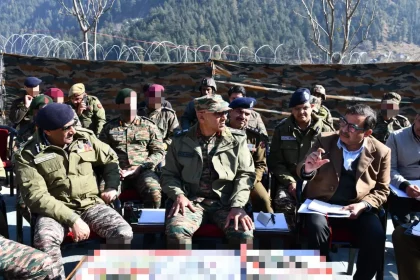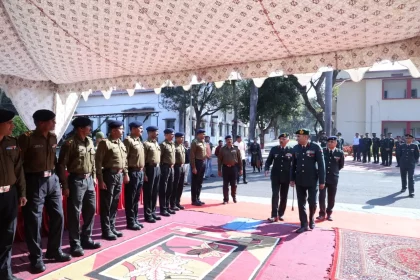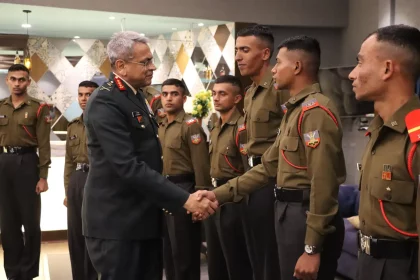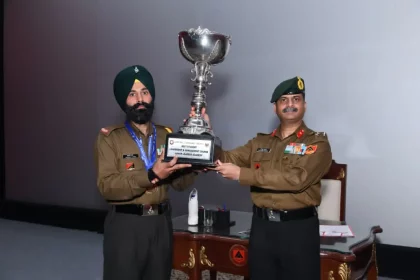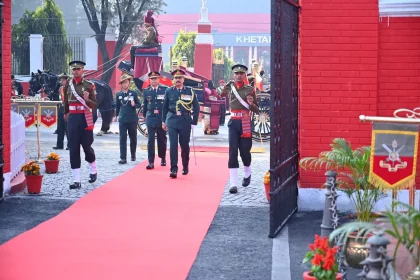Lt Gen Pratik Sharma Reviews Counter-Terror Grid in Kishtwar, Calls for Unified Security Response
Lt Gen Sharma Calls for Real-Time Coordination to Strengthen Security Posture in Kishtwar.
Lt Gen PS Shekhawat Reviews Operational Preparedness at 506 Army Base Workshop
506 ABW’s Support to Field Formations Recognised as Cornerstone of Operational Preparedness.
Lieutenant General Anindya Sengupta Visits IMA, Reviews Training Standards
Southern Army Commander Reviews Training Excellence at India’s Premier Military Academy.
CHM Sukhdev Singh of 7 SIKH Tops Leadership & Management Course at Junior Leaders Academy, Bareilly
The six-week Leadership & Management Course concluded at Junior Leaders Academy, Bareilly on December 10, 2025, with CHM Sukhdev Singh…
Commandant’s Parade at IMA Sets the Tone Ahead of December 13 Passing Out Parade
The Commandant’s Parade held at the Indian Military Academy on December 11, 2025, showcased exceptional drill and turnout, raising expectations…
Ris Major Kewal Singh Named Best Student as Potential Subedar Major Course Concludes at JLA Bareilly
The training capsule reaffirmed JLA Bareilly’s commitment to grooming future-ready Junior Leaders capable of upholding the highest standards of professionalism…

